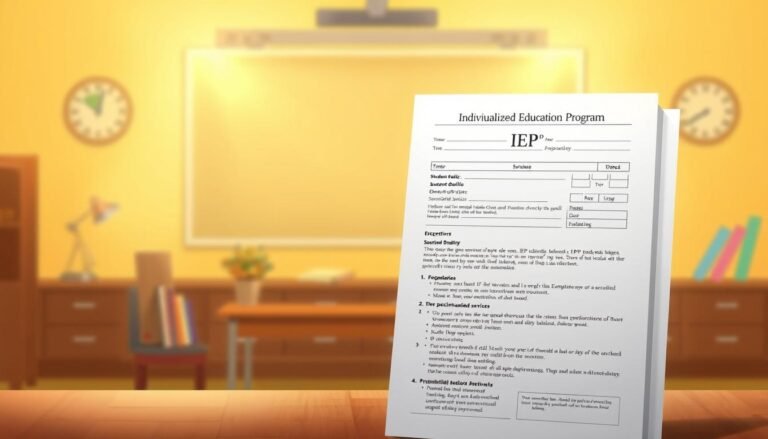Beyond the Basics: Innovative Strategies for Teaching Spelling to Students with Learning Disabilities
Introduction
In the world of education, teaching spelling to students with learning disabilities can often feel like an uphill battle. The importance of spelling cannot be overstated; it serves as a foundational skill that influences overall literacy, self-expression, and academic performance. Yet, traditional spelling instruction may not suffice for every learner, particularly those with learning disabilities. This article explores "Beyond the Basics: Innovative Strategies for Teaching Spelling to Students with Learning Disabilities," offering a plethora of advanced, creative techniques that engage students and cater to their unique learning needs.
Imagine a classroom where every child feels empowered, regardless of their learning challenges. Picture students who can express themselves confidently, using correct spelling as a tool for communication rather than an obstacle. By embracing innovative strategies, educators can transform spelling instruction into an inclusive and effective experience.
Let’s delve into these inventive approaches that extend beyond superficial spelling drills and conventional worksheets.
Understanding Learning Disabilities and Their Impact on Spelling
Before we explore innovative strategies, it’s important to understand what learning disabilities are and how they impact the spelling development of affected students. Learning disabilities can affect various areas, including reading, writing, mathematics, and beyond. Conditions such as dyslexia, dysgraphia, and specific language impairment can hinder spelling abilities, making it challenging for affected students to write accurately and fluently.
The Role of Phonological Awareness
One critical area affected by learning disabilities is phonological awareness—the ability to recognize and manipulate the sounds in words. Research shows that a strong foundation in phonological awareness is essential for spelling success. In fact, studies have indicated that students who struggle with phonological processing often face significant hurdles in spelling.
Case Study: The Impact of Phonological Awareness Training
A noteworthy case study from a local elementary school involved a student with dyslexia struggling to learn spelling patterns. In this case, teachers integrated phonological awareness training into the spelling curriculum through engaging activities like rhyming games and sound segmentation exercises. As a result, the student’s spelling scores improved significantly, demonstrating the effectiveness of focusing on phonological skills. This success story highlights that addressing the underlying causes of spelling difficulties is essential and sets the stage for innovative strategies.
Developing an Inclusive Spelling Program
This segment provides an overview of how to develop an inclusive spelling program that caters to diverse learning needs.
1. Multi-Sensory Learning Approaches
Why it Works: Multi-sensory learning strategies can address different learning styles by incorporating visual, auditory, and kinesthetic elements in teaching.
- Visual: Use colorful word charts or spelling games that highlight spelling patterns.
- Auditory: Incorporate songs or rhymes to help students remember spelling rules.
- Kinesthetic: Use physical letters or spelling beads, allowing students to manipulate letters as they spell.
Implementation: Teachers can set up "spelling stations" in the classroom where students rotate through various activities utilizing different sensory modalities.
2. Word Mapping Techniques
Why it Works: Word mapping encourages students to break words into manageable parts, enhancing their understanding of spelling structure.
- Example Technique: Teach students to create visual maps that break down a word into its syllables, prefixes, and suffixes.
Case Study: A middle school designed a word mapping unit for students with learning disabilities. By visualizing word structures, students became more adept at spelling complex words and showcasing their knowledge in creative writing.
3. Technology Integration
Why it Works: Technology provides students with interactive and personalized learning experiences, making spelling practice more engaging.
- Software Options: Utilize educational software with spell-check features and interactive spelling games tailored for students with learning disabilities.
- Apps: Implement mobile applications that focus on spelling exercises through gamification.
Analysis of Effectiveness: A school that adopted adaptive technology saw an overall increase in student engagement and spelling accuracy. Teachers noted that students were more motivated to practice spelling when using technology.
4. Collaborative Learning
Why it Works: Collaboration encourages peer support and active engagement in the learning process.
- Pair Work: Pair students with learning disabilities with peers who can assist in brainstorming spelling strategies.
- Group Activities: Organize spelling bees or group competitions that foster teamwork.
Case Study: In one classroom, a peer mentoring system for spelling support led to improved outcomes not just for students with learning disabilities, but for their peers as well.
5. Explicit Instruction with Visual Cues
Why it Works: Clear, focused instruction combined with visual aids can significantly enhance understanding and retention.
- Modeling: Teachers should model spelling strategies explicitly.
- Visual Cues: Use charts that outline common spelling rules and exceptions.
Data on Performance: A study conducted in a diverse school environment highlighted that students with explicit instruction utilizing visual aids made greater gains in spelling compared to those who didn’t have this support.
Creating a Supportive Learning Environment
The physical and emotional environment of a classroom plays a crucial role in the success of spelling instruction.
6. Building Confidence Through Celebration
Why it Works: Recognizing achievements, however small, can boost students’ self-esteem and motivation to learn.
- Reward System: Implement a system where students earn badges or certificates for achieving spelling milestones.
Example in Action: In a particular class, a monthly "spelling star" was awarded to students who showed improvement, creating an atmosphere where success was celebrated and spurring students to try harder.
7. Flexible Groupings for Spelling Practice
Why it Works: Varying groups allows students to learn from one another and reduces anxiety about performance.
- Fluid Grouping: Regularly change groups based on spelling challenges or themes.
Analysis: In a flexible grouping system, teachers in a district noted that students with learning disabilities thrived when they could share strengths and weaknesses with classmates.
Monitoring Progress and Adapting Instruction
Regular assessment and adaptation of teaching methods are essential for meeting the evolving needs of students.
8. Ongoing Assessment
Why it Works: Regular assessments provide insights into students’ progress and areas needing more attention.
- Tools: Utilize informal assessments, including creative spelling journals and interactive spelling tests.
9. Personalized Instruction Plans
Why it Works: Each student is unique, and tailoring lessons to individual needs is crucial.
- Customizable Plans: Develop individualized learning plans that set specific, attainable goals for each student.
Success Story: At a district focused on inclusive education, teachers created personalized instruction plans that led to notable spelling improvements among students with learning disabilities, emphasizing the importance of personalization.
Conclusion
The journey of teaching spelling goes beyond traditional methods, especially when addressing the needs of students with learning disabilities. By integrating innovative strategies—such as multi-sensory approaches, technology, inclusivity, and continuous assessment—educators can create a richer, more engaging learning experience.
As we move beyond the basics, let’s remember the transformative power we hold as educators. The commitment to innovate can unlock the potential of every student, helping them shine in their academic journey and beyond.
FAQs
Q1: What are some key signs my child has a learning disability affecting spelling?
A1: Common signs include difficulty recognizing letters and sounds, trouble with handwriting, and challenges remembering spelling rules or patterns.
Q2: How can parents support their child’s spelling development at home?
A2: Parents can create a structured homework environment, utilize educational games and apps, and engage in conversations around spelling to reinforce skills.
Q3: What resources are available for teachers seeking to improve their spelling instruction?
A3: Numerous resources exist, including specialized training webinars, online courses focusing on special education, and platforms offering educational materials tailored to students with learning disabilities.
Q4: How do I know if a spelling strategy is working for my child?
A4: Monitoring progress is crucial. Look for improvements in spelling accuracy on assessments, increased confidence during spelling activities, and overall engagement.
Q5: Are there any specific techniques for understanding spelling rules?
A5: Techniques like teaching common spelling rules, using mnemonic devices, and creating word families are effective for helping students grasp spelling conventions.
By embracing "Beyond the Basics: Innovative Strategies for Teaching Spelling to Students with Learning Disabilities," both educators and parents can pave the way for students to achieve spelling success that empowers their overall academic journey.
















